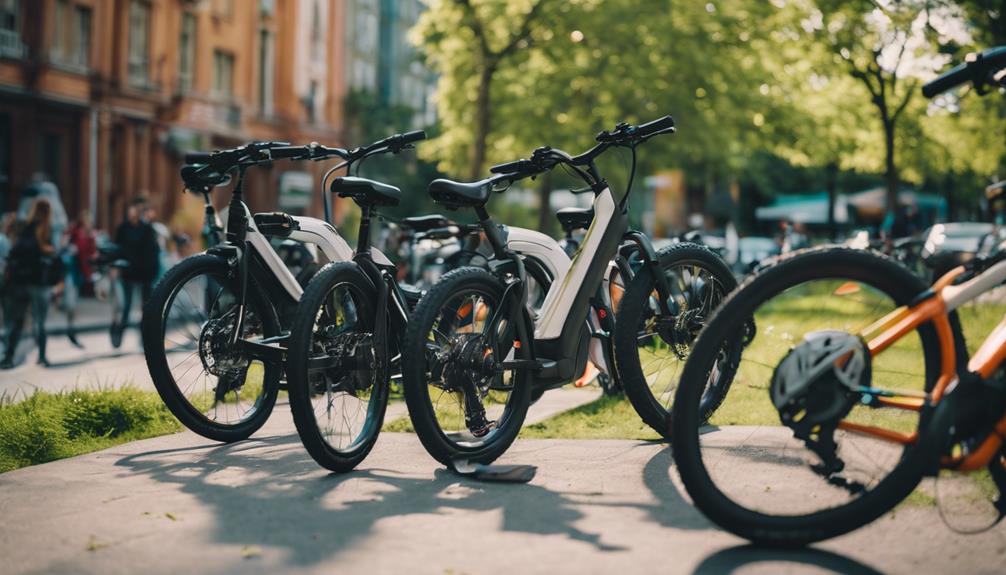As urban landscapes evolve and the need for sustainable transportation increases, second-hand electric bikes have emerged as a popular choice among eco-conscious riders. Not only do these bikes offer an environmentally friendly alternative to traditional vehicles, but they also present a cost-effective solution for those looking to embrace cycling culture. In this article, we will explore the benefits of second-hand electric bikes, factors to consider when purchasing one, and the impact they have on both personal health and the environment.
The Growing Popularity of Electric Bikes
Electric bikes, or e-bikes, have gained immense popularity over the last decade. According to the **Bicycle Retailer and Industry News**, the global e-bike market was valued at approximately $23 billion in 2020 and is expected to reach over $46 billion by 2026. This surge can be attributed to several factors:
- Convenience: E-bikes provide a level of convenience that traditional bicycles do not, offering electric assistance that helps riders tackle steep hills and long distances with ease.
- Health Benefits: Riding an e-bike promotes physical activity while reducing the barriers to cycling, such as fatigue or physical limitations.
- Environmental Impact: E-bikes produce zero emissions during operation, making them a greener alternative to cars and motorcycles.
The Appeal of Second-Hand Electric Bikes
While new electric bikes can be quite expensive, second-hand options provide a more budget-friendly alternative without sacrificing quality and performance. Here are some of the key advantages of opting for a used e-bike:
- Cost Savings: Purchasing a second-hand electric bike can save you hundreds, if not thousands, of dollars compared to buying new.
- Reduced Depreciation: New bikes depreciate quickly; by purchasing second-hand, you avoid the steep decline in value that occurs in the first few years.
- Access to Quality Brands: Buying used allows you to access higher-end brands and models that may have been out of reach when shopping for new bikes.
- Encouraging Sustainable Practices: Choosing second-hand helps reduce waste and promotes a circular economy, supporting sustainability efforts.
Factors to Consider When Purchasing a Second-Hand Electric Bike
While the benefits of buying a second-hand electric bike are clear, it’s essential to approach the purchase with caution. Here are some key factors to keep in mind:
1. Battery Condition
The battery is one of the most critical components of an electric bike. Here are some tips for assessing battery health:
- Ask about the battery’s age and how many charge cycles it has gone through.
- Check for any signs of swelling or damage.
- Test the bike to see how far it can travel on a single charge.
2. Frame and Components
A thorough inspection of the bike’s frame and components is vital:
- Look for signs of rust, dents, or other damage on the frame.
- Ensure that gears, brakes, and tires are in good working condition.
- Check the motor for any unusual noises or performance issues.
3. Warranty and Support
Some manufacturers offer warranties on their e-bikes, even for second-hand models. Make sure to:
- Ask if the bike is still under warranty.
- Find out if the seller offers any support or service after the purchase.
4. Research the Seller
Buying from a reputable seller is crucial:
- Look for reviews or testimonials from previous customers.
- Ask about the seller’s return policy in case the bike doesn’t meet your expectations.
Real-Life Case Studies: Success Stories of Second-Hand Electric Bike Users
Many individuals have embraced second-hand electric bikes as a primary mode of transportation. Here are two inspiring stories:
Case Study 1: Urban Commuter
Sarah, a 30-year-old professional living in a bustling city, opted for a second-hand e-bike to reduce her commuting costs and carbon footprint. She purchased a used model for $800, which previously retailed for over $1,500. With her new bike, she not only saves money on fuel and public transport but also enjoys a healthier lifestyle. Her daily commute is now a refreshing ride rather than a stressful experience.
Case Study 2: Family Adventure
The Johnson family decided to invest in second-hand electric bikes to encourage outdoor activities and family bonding. They bought three used e-bikes, saving over $2,000 compared to purchasing new. They now regularly explore local parks and trails, promoting a healthy lifestyle while enjoying quality time together.
The Environmental Impact of Choosing Second-Hand Electric Bikes
One of the most significant benefits of purchasing second-hand electric bikes is their positive impact on the environment. Here’s how:
- Less Waste: By buying used, you contribute to reducing waste and minimizing the number of bikes that end up in landfills.
- Lower Carbon Footprint: E-bikes offer a greener alternative to cars, reducing greenhouse gas emissions significantly.
- Promoting Cycling Culture: The more people who ride bikes, the fewer cars are on the road, leading to less congestion and pollution.
Conclusion: Embrace the Journey with Second-Hand Electric Bikes
Second-hand electric bikes are more than just a trend; they represent a shift towards sustainable living and eco-conscious transportation. With their affordability, environmental benefits, and the health advantages they offer, these bikes are a compelling option for anyone looking to make a positive change in their commuting habits. However, it’s essential to approach the purchase with care, ensuring that you take into account the bike’s condition and the reputation of the seller.
As demonstrated by real-life success stories, second-hand electric bikes can transform not only individual lifestyles but also communities as a whole. By choosing to invest in a used e-bike, you are not just purchasing a mode of transportation; you are embracing a healthier, more sustainable lifestyle that positively impacts the planet.
